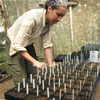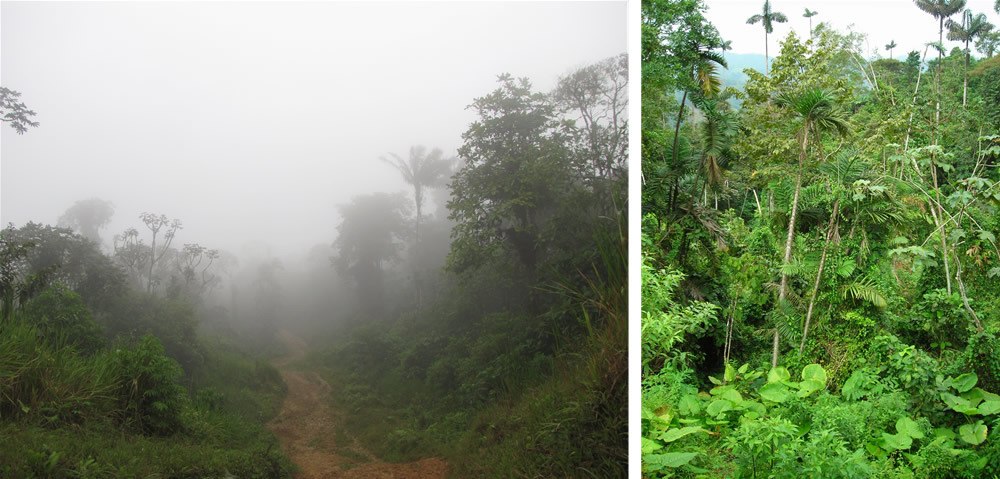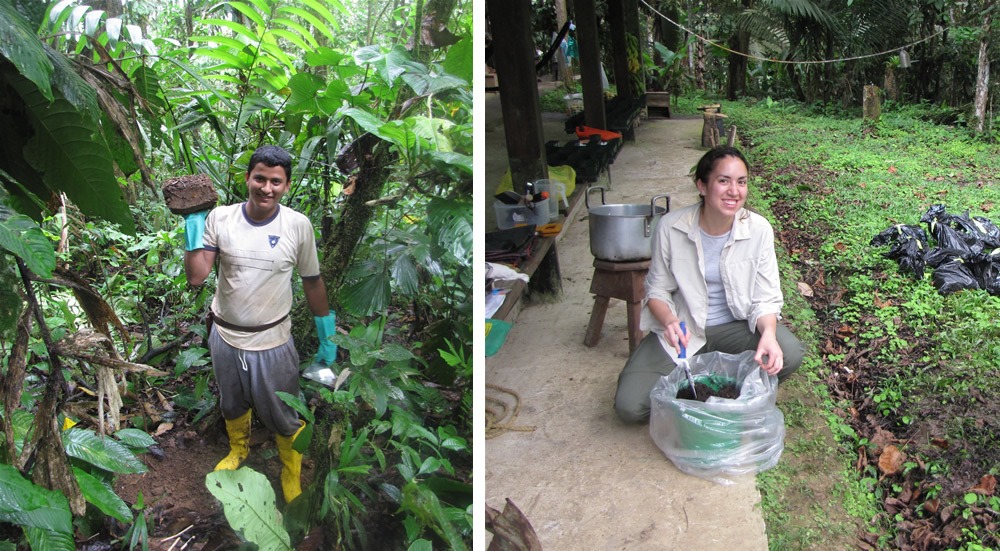
Blog |
The Ecological and Genetic Role of Seed Dispersal for a Tropical Tree in Ecuador
For tropical forest trees, seed dispersal can significantly enhance seedling establishment. Undispersed seeds deposited near the maternal tree may face ecological stressors such as low light, kin competition, and pest pressure. According to one classic hypothesis (known as the Janzen-Connell hypothesis), excessive seed and seedling mortality should occur near the maternal parent and other conspecific adults (those of the same species), where high progeny densities attract species-specific natural enemies. Soil-borne pathogens, such as the seedling-killing class of oomycetes (fungus-like microorganisms), may represent a particular challenge for seedlings recruiting near conspecifics. From an ecological perspective, seed dispersal may increase the probability that seeds escape pathogen pressure or are deposited in favorable germination sites such as light gaps. Because pathogens may differentiate at fine spatial scales and interact directly with host genotypes, seed dispersal may also provide a genetic means of escape from local pathogens. My research combines field experiments with genomic tools in the lab to investigate the ecological and genetic advantages of seed dispersal.

I conduct my field research at the Bilsa Biological Research Station, a 3,500-hectare reserve adjacent to the larger Mache-Chindul Ecological Reserve in northwestern Ecuador. Together, these reserves protect highly threatened Chocó forest, which is considered a biodiversity hotspot. My focal species, Pentagonia macrophylla, is an understory tree, widely distributed throughout the Neotropics. It belongs to the Rubiaceae family, which also includes all coffee plants. Large, multi-seeded fruits of Pentagonia macrophylla are dispersed by birds, primates, and bats.

This year, I spent six weeks at the Bilsa reserve studying the ecological role of dispersal with the assistance of an agroforestry student from Ecuador, as well as volunteers from Bilsa. To do this, we set up a small-scale greenhouse experiment to test the effect of soil microsite and pathogens on seedling growth and mortality. Seeds in the experiment were harvested from six maternal sources and soil quadrats were excavated from three nearby “home” sites and one “away” site (2.5 km) per source tree. In total, we planted 128 seeds per source tree among the four soil types, half of which received a fungicide treatment targeting oomycetes.

Lending support to a Janzen-Connell effect, preliminary results showed a trend for increased growth and reduced mortality at away sites relative to home sites. Fungicide treatment further decreased mortality at home sites, supporting a potential pathogen effect. During my next field season, I will use seedling transplant experiments to test the advantages of dispersal under natural conditions. This research will be coupled with tissue sampling for ribonucleic acid (RNA) extractions to test the hypothesis that seedling genotypes affect successful seedling recruitment. Thus far, we have mapped and collected tissue from 106 Pentagonia macrophylla adults, 54 juveniles, and 549 seedlings. By integrating findings from traditional field experiments with cutting edge genomic tools, this work will demonstrate the way that seed dispersal affects both seedling survival and the underlying genetic diversity of seed populations.
Photo Credits: Stephanie Steele and José Zambrano
